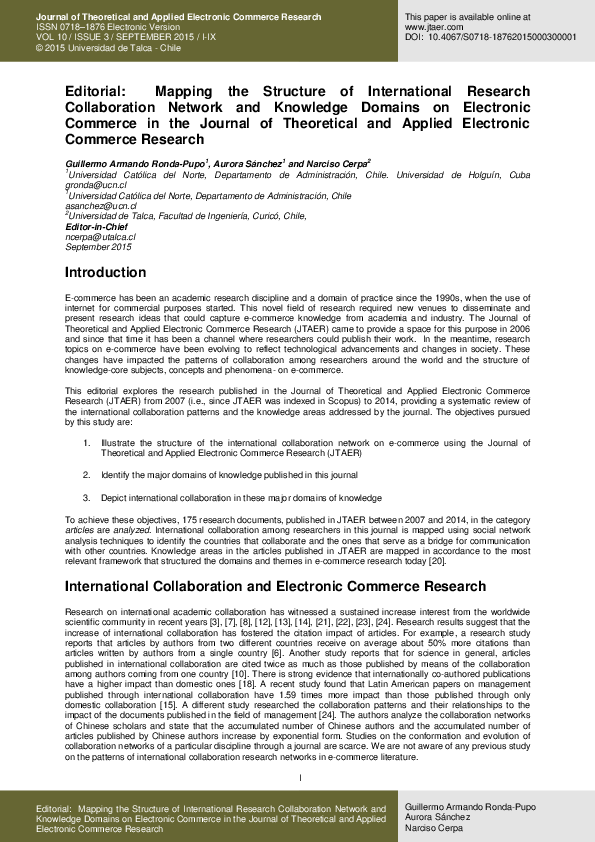Analyzing the Dynamics of Customer Behavior: A New Perspective on Personalized Marketing through Counterfactual Analysis
IF 5.1
3区 管理学
Q1 BUSINESS
Journal of Theoretical and Applied Electronic Commerce Research
Pub Date : 2024-06-27
DOI:10.3390/jtaer19030081
引用次数: 0
Abstract
The existing body of research on dynamic customer segmentation has primarily focused on segment-level customer purchasing behavior (CPB) analysis to tailor marketing strategies for distinct customer groups. However, these approaches often lack the granularity required for personalized marketing at the individual level. Moreover, the analysis of customer transitions between different groups has largely been overlooked. This study addresses these gaps by developing an efficient framework that enables businesses to forecast customer behavior, assess the impact of various strategies on each customer separately, and analyze customer transition between segments. This can facilitate providing personalized marketing strategies, fostering a gradual transition toward a desired customer status, and enhancing the overall marketing precision. In this study, we employ time series feature vectors encompassing recency, frequency, monetary value, and lifespan, applying the K-means algorithm with a range of distance metrics for customer segmentation along with classification algorithms to predict customer behavior. Leveraging counterfactual analysis, we establish a solution for analyzing customer transitions between groups and evaluating personalized marketing strategies. Our findings underscore the superior performance of the Euclidean distance metric, closely followed by the Manhattan distance, in distinguishing the patterns in time series customer behavior, with logistic regression excelling in predicting customer status. This study enables decision-makers to forecast the impact of diverse marketing strategies on customer behavior which facilitates customer retention and engagement through well-informed decisions.分析客户行为动态:通过反事实分析看个性化营销的新视角
现有的动态客户细分研究主要侧重于细分层面的客户购买行为(CPB)分析,以便为不同的客户群体量身定制营销策略。然而,这些方法往往缺乏个体层面个性化营销所需的细粒度。此外,不同群体之间的客户转换分析在很大程度上也被忽视了。本研究针对这些不足,开发了一个高效的框架,使企业能够预测客户行为,分别评估各种策略对每个客户的影响,并分析细分客户之间的转换。这有助于提供个性化营销策略,促进客户逐步过渡到理想状态,并提高整体营销精准度。在本研究中,我们采用了时间序列特征向量,包括重复性、频率、货币价值和生命周期,应用 K-means 算法和一系列距离指标进行客户细分,并采用分类算法预测客户行为。利用反事实分析,我们建立了一套解决方案,用于分析客户在不同群体之间的转换,并评估个性化营销策略。我们的研究结果表明,在区分时间序列客户行为模式方面,欧几里得距离度量性能优越,曼哈顿距离紧随其后,而逻辑回归在预测客户状态方面表现出色。这项研究使决策者能够预测各种营销策略对客户行为的影响,从而通过充分知情的决策促进客户保留和参与。
本文章由计算机程序翻译,如有差异,请以英文原文为准。
求助全文
约1分钟内获得全文
求助全文
来源期刊
CiteScore
9.50
自引率
3.60%
发文量
67
期刊介绍:
The Journal of Theoretical and Applied Electronic Commerce Research (JTAER) has been created to allow researchers, academicians and other professionals an agile and flexible channel of communication in which to share and debate new ideas and emerging technologies concerned with this rapidly evolving field. Business practices, social, cultural and legal concerns, personal privacy and security, communications technologies, mobile connectivity are among the important elements of electronic commerce and are becoming ever more relevant in everyday life. JTAER will assist in extending and improving the use of electronic commerce for the benefit of our society.

 求助内容:
求助内容: 应助结果提醒方式:
应助结果提醒方式:


